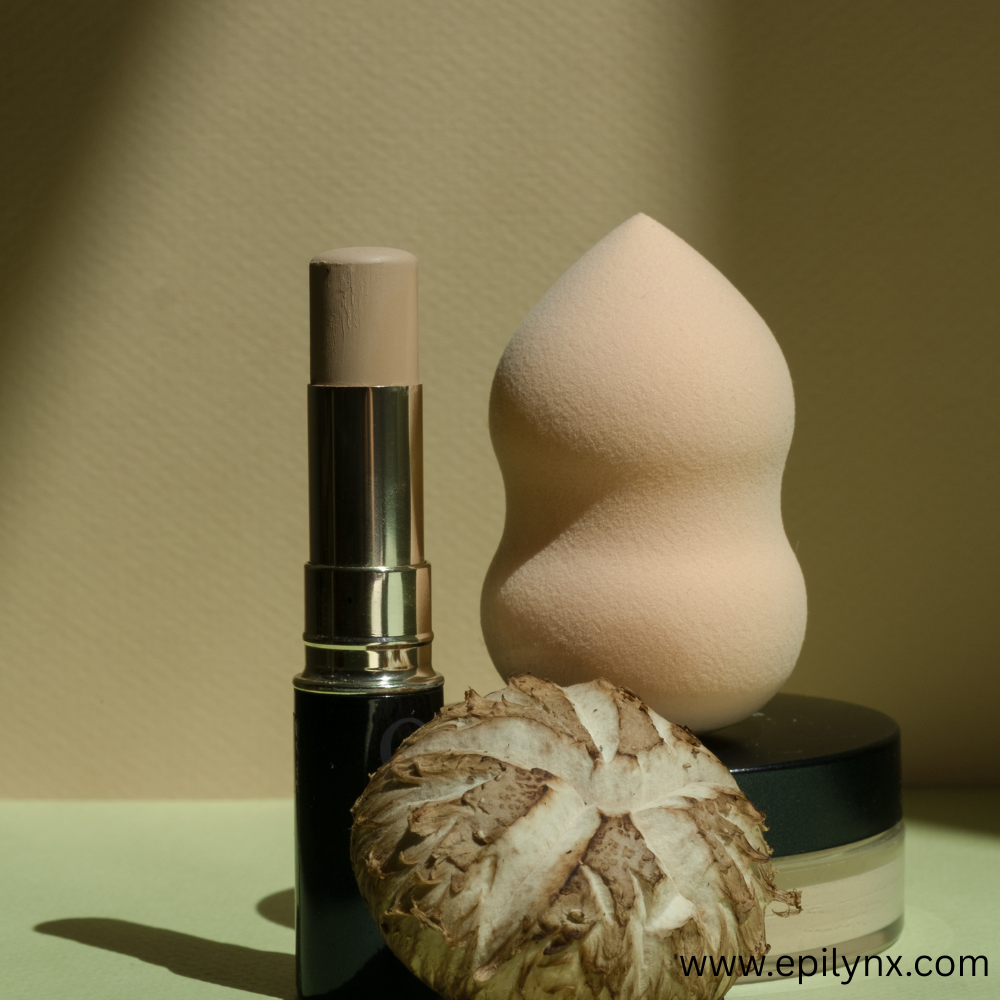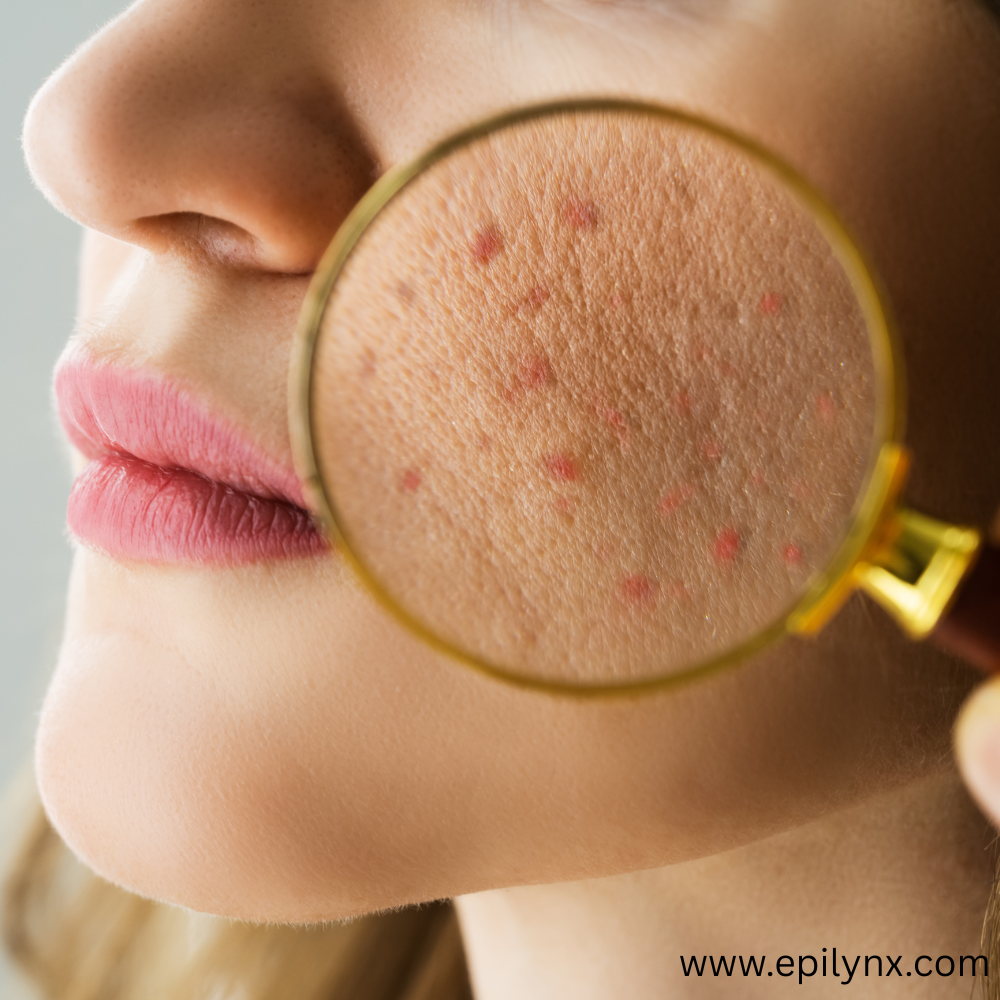
Your Face is a Fortress Under Attack: The Science Behind Why Allergen-Free Beauty Actually Works
Mind-blowing fact: Your skin replaces itself completely every 28 days, which means you've had approximately 13 different faces since last year.
Think your skin is just a pretty wrapper for your insides? Think again. Your skin is actually a sophisticated military defense system that's constantly fighting a war you didn't even know was happening.
Every single day, your face battles approximately 1,500 different chemical compounds, 40,000+ environmental particles, and countless microscopic invaders trying to breach your body's perimeter. And that's before you even put on makeup.
Welcome to the fascinating world of skin barrier science, where chemistry meets biology, and where understanding your skin's defense mechanisms will completely change how you think about allergen-free beauty products.
The Incredible Architecture of Your Skin Fortress
Your skin isn't just one layer – it's actually 7 distinct layers working together like a high-tech security system.
The Skin Layer Breakdown (From Outside In):
1. Acid Mantle (The Invisible Shield)
- pH level of 4.5-6.5 (slightly acidic)
- Made of sebum, sweat, and dead skin cells
- Fun fact: This layer is so thin it's measured in micrometers, but it's your first defense against 99% of harmful bacteria
2. Stratum Corneum (The Brick Wall)
- 15-20 layers of dead skin cells
- Acts like overlapping roof shingles
- Scientific surprise: These "dead" cells are actually highly organized and still biochemically active
3. Stratum Lucidum (The Clear Barrier)
- Only exists on palms and soles
- Extra protection for high-friction areas
- Weird fact: You literally have different skin on your hands than your face
4. Stratum Granulosum (The Quality Control)
- Where skin cells start dying (on purpose!)
- Produces waterproofing proteins
- Plot twist: This layer intentionally kills cells to make them stronger barriers
5. Stratum Spinosum (The Communication Network)
- Cells connected by tiny bridges
- Where immune responses begin
- Cool science: These connections can break and reform in response to threats
6. Stratum Basale (The Factory Floor)
- Where new skin cells are born
- Contains stem cells that never stop dividing
- Amazing fact: This layer produces 30,000 new cells every minute
7. Dermis (The Foundation)
- Contains blood vessels, nerves, hair follicles
- Houses your skin's repair mechanisms
- Mind-blower: Your dermis contains enough blood vessels to wrap around your body 3 times
The Chemical Warfare Your Skin Faces Daily
Every beauty product you apply is essentially a chemical invasion force trying to penetrate your skin's defenses.
The Daily Chemical Assault Statistics:
Average woman applies 515 synthetic chemicals to her body daily
- 60% get absorbed through the skin barrier
- Absorption rate increases to 80% when skin is warm or damaged
- Shocking fact: Your skin absorbs chemicals faster than your digestive system
The skin absorption hierarchy:
- Face: Absorbs chemicals 300% faster than other body areas
- Scalp: 200% absorption rate (why shampoo ingredients matter)
- Underarms: 100% absorption rate (deodorant goes straight into bloodstream)
- Palms/Soles: 10% absorption rate (nature's protective design)
The Allergen Invasion: A Molecular War Story
When allergens breach your skin barrier, your immune system launches a full-scale military response.
The Allergic Reaction Timeline (In Real Time):
0-15 Minutes: The Initial Breach
- Allergen molecules penetrate the stratum corneum
- Skin cells release alarm signals (histamine)
- Blood vessels dilate to bring reinforcements
- Fun fact: Your skin can detect threats smaller than 500 daltons (molecular weight)
15-60 Minutes: The Immune Response
- White blood cells arrive at the scene
- Inflammatory mediators flood the area
- Nerve endings become hypersensitive
- Scientific surprise: Your skin has its own immune memory
1-4 Hours: The Full Battle
- Mast cells release 200+ different chemicals
- Blood-brain barrier can be affected by skin reactions
- Systemic inflammation begins
- Plot twist: Skin reactions can affect your mood and cognitive function
4-24 Hours: The Aftermath
- Tissue repair mechanisms activate
- Barrier function is compromised for days
- Sensitivity to future exposures increases
- Important fact: Each reaction makes the next one more likely
The Science of Why "Hypoallergenic" Is Meaningless
Here's a fun fact that'll make you question everything: The term "hypoallergenic" has no legal definition and no scientific standard.
The Hypoallergenic Hoax Breakdown:
What companies want you to think it means: "This product will never cause allergic reactions in anyone, anywhere, ever."
What it actually means: "We think this might cause fewer reactions than our other products, but we didn't actually test it."
The scientific reality:
- No product can be truly hypoallergenic for everyone
- Even water can cause reactions in some people (aquagenic urticaria)
- Surprising fact: The most "hypoallergenic" substance on Earth is medical-grade silicone, and even that causes reactions in 0.01% of people
The Molecular Size Matters: The 500 Dalton Rule
Here's where beauty science gets really interesting: Only molecules smaller than 500 daltons can penetrate healthy skin.
The Molecular Size Beauty Chart:
Can Penetrate Skin (Under 500 Daltons):
- Water (18 daltons)
- Glycerol (92 daltons)
- Caffeine (194 daltons)
- Retinol (286 daltons)
- Surprise entry: Nicotine (162 daltons) - why nicotine patches work
Cannot Penetrate Healthy Skin (Over 500 Daltons):
- Most proteins (10,000-100,000 daltons)
- Collagen (300,000 daltons)
- Hyaluronic acid (1,000,000+ daltons)
- Plot twist: Most "anti-aging" ingredients are too big to work
The beauty industry secret: Many expensive ingredients literally cannot penetrate your skin, making them very expensive moisturizers.
The pH Science: Why Your Skin Loves Acid
Your skin's natural pH is between 4.5-6.5, but most beauty products are alkaline (pH 7-9).
The pH Disruption Disaster:
When you use alkaline products:
- Acid mantle is destroyed within minutes
- Harmful bacteria multiply 10x faster
- Skin barrier function drops by 50%
- Recovery takes 4-6 hours
- Scary fact: Some damage can take up to 14 days to fully repair
The pH product reality check:
- Soap: pH 9-10 (extremely alkaline)
- Cleansing foam: pH 8-9 (still too alkaline)
- Micellar water: pH 7-8 (better but not ideal)
- Winner: Oil cleansers: pH 5-6 (skin-compatible)
Fun experiment: You can test your products' pH using pool test strips!
The Microbiome: Your Skin's Invisible Ecosystem
Your skin hosts approximately 1 trillion microorganisms from 1,000 different species.
The Skin Microbiome Facts:
The bacterial population:
- 1 square centimeter of skin = 100,000-1,000,000 bacteria
- Your face has different bacteria than your arms
- Mind-blowing fact: You share more bacterial DNA with your partner than with your siblings
The microbiome functions:
- Produces natural antibiotics
- Maintains optimal pH levels
- Prevents pathogenic bacteria colonization
- Scientific surprise: Good bacteria eat your dead skin cells (natural exfoliation!)
How beauty products affect your microbiome:
- Antimicrobial ingredients kill good and bad bacteria
- Alkaline products disrupt bacterial balance
- Recovery time: 24-48 hours for minor disruption, weeks for major damage
The Ceramide Science: Your Skin's Natural Mortar
Ceramides make up 50% of your skin barrier and act like mortar between skin cell "bricks."
The Ceramide Deep Dive:
What ceramides actually do:
- Prevent water loss (TEWL - trans-epidermal water loss)
- Block allergen penetration
- Maintain barrier flexibility
- Cool fact: You have 12 different types of ceramides
Ceramide depletion causes:
- Over-cleansing
- Hot water exposure
- Alkaline product use
- Aging (you lose 1% per year after age 30)
- Surprising factor: Air conditioning reduces ceramide production
The ceramide replacement science:
- Topical ceramides can restore barrier function
- Plant-derived ceramides work as well as synthetic ones
- Timing matters: Best absorption occurs within 3 minutes of cleansing
The Allergen Cross-Reactivity Web
Allergies aren't isolated – they're connected in surprising ways through molecular similarity.
The Cross-Reactivity Chains:
If you're allergic to birch pollen, you might also react to:
- Apple (Oral Allergy Syndrome)
- Stone fruits (peaches, plums, cherries)
- Carrots, celery, parsley
- Beauty connection: Some plant-based beauty ingredients share proteins with food allergens
If you're allergic to latex, you might also react to:
- Bananas, avocados, kiwis
- Chestnuts
- Beauty surprise: Some makeup applicators contain latex proteins
If you're allergic to nickel, you might also react to:
- Cobalt (found in blue pigments)
- Chrome (found in green pigments)
- Makeup connection: Many eyeshadow palettes contain trace metals
The Seasonal Skin Science
Your skin barrier function changes dramatically with seasons due to environmental factors.
The Seasonal Barrier Variations:
Winter skin science:
- Humidity below 30% increases TEWL by 25%
- Cold air reduces sebum production
- Indoor heating damages the acid mantle
- Surprising fact: Your skin is 25% thicker in winter
Summer skin science:
- Heat increases absorption rate by 400%
- Humidity above 70% can cause barrier swelling
- UV exposure depletes ceramides within hours
- Plot twist: You need different products every 10 degrees of temperature change
Spring allergy skin science:
- Pollen particles are 10-50 microns (too big to penetrate skin)
- But they trigger surface inflammation that compromises barriers
- Double trouble: Weakened barriers then let smaller allergens through
The Age-Related Barrier Breakdown
Your skin barrier ages faster than any other body system.
The Aging Barrier Timeline:
Age 25-30:
- Peak barrier function
- Optimal repair capacity
- Fun fact: This is when you should start preventive care
Age 30-40:
- 1% annual decrease in ceramide production
- Slower cell turnover (35-day cycle instead of 28)
- Key change: Decreased ability to recover from damage
Age 40-50:
- 50% reduction in natural moisturizing factors
- Thinner stratum corneum
- Hormonal factor: Estrogen decline dramatically affects barrier function
Age 50+:
- 75% reduction in sebum production
- Compromised immune function
- Surprising benefit: Less acne, but more sensitivity to allergens
The Science of Patch Testing
Patch testing isn't just dabbing product on your arm – it's actually sophisticated immunology.
The Patch Test Science:
Why 48-72 hours matters:
- T-cell activation takes 24-48 hours
- Memory cell formation takes 48-72 hours
- Late reactions: Some occur up to 7 days later
Why location matters for testing:
- Inner arm skin is 300% more sensitive than face
- Behind ear is 200% more sensitive
- Testing paradox: A negative arm test doesn't guarantee face safety
The molecular memory:
- Skin cells remember allergens for months
- Priming effect: First exposure sensitizes, second exposure reacts
- Cross-sensitization: Related molecules can trigger memories
The Ingredient Penetration Enhancement Science
Beauty companies use "penetration enhancers" to force ingredients through your barrier.
The Penetration Enhancement Methods:
Chemical enhancers:
- Propylene glycol (increases absorption 10x)
- Dimethyl sulfoxide (DMSO) - forces anything through skin
- Double-edged sword: Also increases allergen penetration
Physical enhancers:
- Heat (every 10°C doubles absorption)
- Occlusion (covering skin increases absorption 500%)
- Microneedling: Creates temporary 200-micron channels
Natural enhancers:
- Essential oils (terpenes are natural penetration enhancers)
- Surprising fact: This is why "natural" doesn't always mean safer
The Detoxification Myth: What Your Skin Actually Does
Your skin doesn't "detox" – here's what actually happens:
The Real Skin Elimination Science:
What skin actually eliminates:
- 0.1% of total body waste
- Mostly water and electrolytes
- Some heavy metals through hair follicles
- Reality check: Your liver and kidneys do 99.9% of detoxification
The "detox" product lie:
- Skin cannot eliminate toxins through pores
- "Purging" is usually just irritation
- Scientific fact: Clay masks remove surface oil, not deep "toxins"
The Formulation Science: Why Allergen-Free Products Work Better
Allergen-free formulations often work better because they focus on skin compatibility.
The Formulation Philosophy Differences:
Traditional beauty products:
- Prioritize sensory experience and shelf stability
- Use multiple preservatives and stabilizers
- Result: Complex formulations with more reaction potential
Allergen-free beauty products:
- Prioritize skin barrier compatibility
- Use minimal, well-researched ingredients
- Result: Simpler formulations that actually support skin health
The paradox: Removing problematic ingredients often makes products more effective, not less.
The Future Science: Personalized Beauty Based on Genetics
Emerging research shows your genetic makeup determines your allergen sensitivities.
The Genetic Beauty Future:
Current research:
- 23 genetic variants affect skin barrier function
- 45 genes influence allergen sensitivity
- Breakthrough: Genetic testing can predict product compatibility
The personalization potential:
- Custom formulations based on your DNA
- Predictive allergy testing
- Timeline: Available within 5-10 years
Your Science-Based Allergen-Free Beauty Strategy
Understanding Your Individual Barrier:
- Track how your skin responds to environmental changes
- Notice patterns in reaction timing and severity
- Document which ingredient categories cause issues
- Science application: Use this data to predict product compatibility
Choosing Products Based on Science:
- Prioritize pH-compatible products (4.5-6.5)
- Look for ceramide-containing formulations
- Avoid unnecessary penetration enhancers
- Molecular wisdom: Understand that simpler is often more effective
Building a Barrier-Supporting Routine:
- Gentle cleansing to preserve acid mantle
- Immediate moisturization to prevent TEWL
- Consistent routine to maintain microbiome balance
- Scientific timing: Apply products within 3 minutes of cleansing for optimal absorption
The Science-Based Beauty Truth: Understanding the science behind your skin barrier transforms beauty from guesswork into precision. When you know how your skin actually works, choosing allergen-free products becomes logical, not limiting.
Your skin is an incredible biological system that deserves products formulated with scientific understanding, not just marketing appeal.
Because the most beautiful skin is healthy skin – and healthy skin is scientifically supported skin.
Ready to experience beauty products formulated with cutting-edge skin barrier science? Discover our research-backed, allergen-free collection designed to work with your skin's natural biology, not against it.


